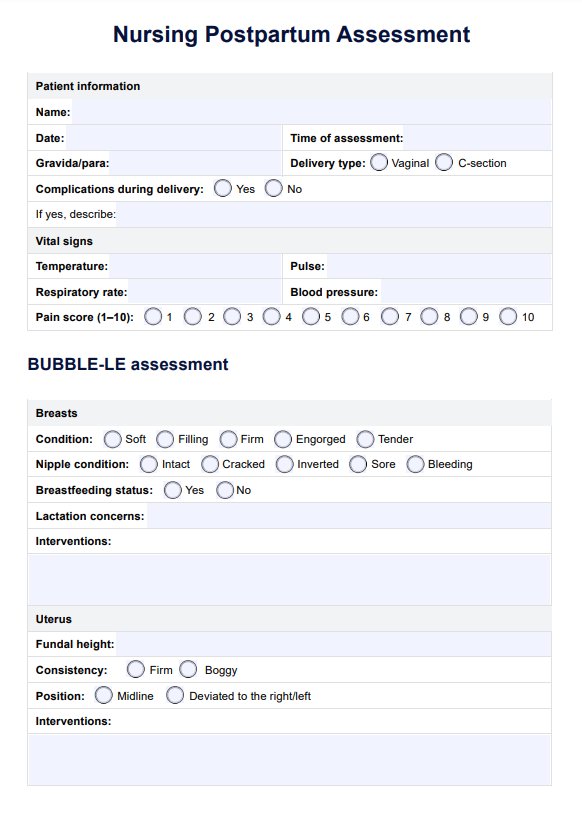The immediate assessment of a mother after delivery involves checking vital signs, monitoring for postpartum hemorrhage, and assessing uterine tone and vaginal bleeding to ensure stable recovery. Using Carepatron's Postpartum Nursing Care Assessment template can help healthcare providers streamline this critical evaluation.

Nursing Postpartum Assessment
Discover the importance of Postpartum Nursing Care and create effective assessments with our handy free guide!
Nursing Postpartum Assessment Template
Commonly asked questions
Nursing assessments during the postpartum period include monitoring the mother's physical recovery, such as uterine cramping, bladder distention, and perineal pain, while also assessing emotional well-being for signs of postpartum depression. Carepatron’s assessment template helps track these key areas effectively for better patient outcomes.
The 5-5-5 rule advises postpartum women to rest in bed for 5 days, stay around the house for another 5 days, and slowly resume activities over the next 5 days.
EHR and practice management software
Get started for free
*No credit card required
Free
$0/usd
Unlimited clients
Telehealth
1GB of storage
Client portal text
Automated billing and online payments











